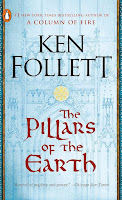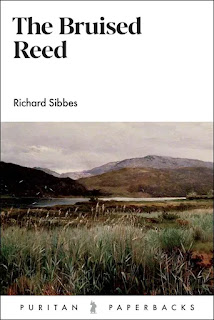Tuesday, September 9, 2025
All-Star Superman, Volume 1
Sunday, September 7, 2025
The Flash
Saturday, September 6, 2025
You are Not Your Own (Alan Noble)
- Q. What is your only comfort in life and death?
- A. That I am not my own, but belong with body and soul, both in life and in death, to my faithful Saviour Jesus Christ.
Tuesday, September 2, 2025
Thrawn (Timothy Zahn)
Rating: B-
Sunday, August 31, 2025
K-Pop Demon Hunters
Thursday, August 21, 2025
Daredevil: Through Hell
Sunday, August 10, 2025
Daredevil: No Devils, Only God
Saturday, August 9, 2025
Stone Harbor & Cape May
Overall, we spent our Stone Harbor days on the beach, walking the town, enjoying the homes, eating ice cream, and playing games or relaxing with our friend. And enjoying the sunrise. Time well spent.
Monday, August 4, 2025
The Red Fox (Anthony Hyde)
Sunday, August 3, 2025
The Fantastic Four: First Steps
Saturday, August 2, 2025
Gutted
Perhaps we all reach a point in life where we find our joy in the ‘doing’ of life more than in the achievements of life . . . I [now] value the experience more than the outcome. And I prioritize the people I am with over the activity I am performing. For me, it has not always been that way.
Friday, August 1, 2025
The Templars (Dan Jones)
Rating: A
Wednesday, July 30, 2025
Love, Part Three
Tuesday, July 29, 2025
Love, Part Two
Yesterday, I looked at love and what the Bible says about it. Today, I look at what AI says.
From AI, 7/20/2025
The Bible defines love, particularly in the New Testament,
as a selfless, sacrificial, and enduring commitment that seeks the
well-being of others, often referred to as agape love. It's not simply an
emotion but a choice to act in ways that benefit others, even when it's not
reciprocated or convenient.
Here's a more detailed explanation:
The Bible often uses the Greek word "agape" to
describe God's love, which is unconditional, sacrificial, and extends even to
enemies.
- Not
Just Feelings:
While feelings can be a part of love, biblical love goes
beyond emotions. It's a deliberate choice to act with kindness,
compassion, and generosity, prioritizing the needs of others.
- 1
Corinthians 13:
This famous passage describes love as patient, kind, not
envious, boastful, arrogant, rude, selfish, irritable, resentful, rejoicing in
wrongdoing, but rejoicing in truth, enduring all things, believing all things,
hoping all things, and bearing all things.
- Sacrificial:
God's love, as demonstrated through Jesus, is sacrificial,
giving even when it costs dearly.
- Love
for God and Others:
The Bible emphasizes loving God with all your heart, soul,
and mind, and loving your neighbor as yourself, highlighting the importance of
both a vertical and horizontal expression of love.
- Love
is an Action:
Love is not passive; it is an active force that
motivates actions of kindness, forgiveness, and compassion.
- Love
is a reflection of God's nature:
Because God is love, love is a core aspect of His character
and a defining trait of those who follow Him.
I must say, I'm impressed with AI's summary here.
Monday, July 28, 2025
Love, Part One
Friday, July 25, 2025
The Hobbit (J.R.R. Tolkien)
Wednesday, July 23, 2025
Pillars of the Earth & World Without End (Ken Follett)
Sunday, July 20, 2025
Daredevil: Know Fear
Saturday, July 19, 2025
Superman (2025)
Friday, July 18, 2025
Monopoly: Pokemon Edition
 |
| game contents; image from here |
Thursday, July 17, 2025
Shouldering a Burden
Tuesday, July 8, 2025
Lila (Marilynne Robinson)
Wednesday, July 2, 2025
The Bruised Reed (Richard Sibbes)
a bruised reed he will not break,What do these words mean? A bruised reed is one who "is sensible of sin and misery . . . and, seeing no help in himself . . [turns] to Christ." Similarly, a smoldering wick [or smoking flax] is he who sees a spark of Christ's work in him, yet also much smoke [sin] that remains. In both cases, these are those who understand they bring nothing to God; that our hearts are wicked, even our righteous deeds are filthy, and thus can only cry 'be merciful to me a sinner.'
and a smoldering wick he will not quench,
Monday, June 30, 2025
Midterm Report
 |
| image from here |
Spiritual
- Be disciplined in reading/prayer routines (and reduce putzing).
- Do devotionals with the family twice a week.
- Serve better, but in fewer roles.
- Focus more on others. Figure out balance with competing needs.
Nutritional/Fitness
- Get (and keep) weight under 185 lbs.
- Eat more fruit/vegetables. Eat out less.
- Improve gut health.
- Complete 270 workouts; bike 1200 miles.
- Read 50 books.
- Read 15 works on my American Reading List.
- Minimize my owned-but-unread pile.
- Minimize everything in the home.
- Buy less/budget better.
Sunday, June 29, 2025
How to Lead Your Family (Joel Beeke)
Tuesday, June 24, 2025
Thoughts and Prayers
If a brother or sister is poorly clothed and lacking in daily food, and one of you says to them, “Go in peace, be warmed and filled,” without giving them the things needed for the body, what good is that?
Saturday, June 21, 2025
Similo (The Lord of the Rings edition)
 |
| Example Lord of the Rings Similo layout; image from here |















































